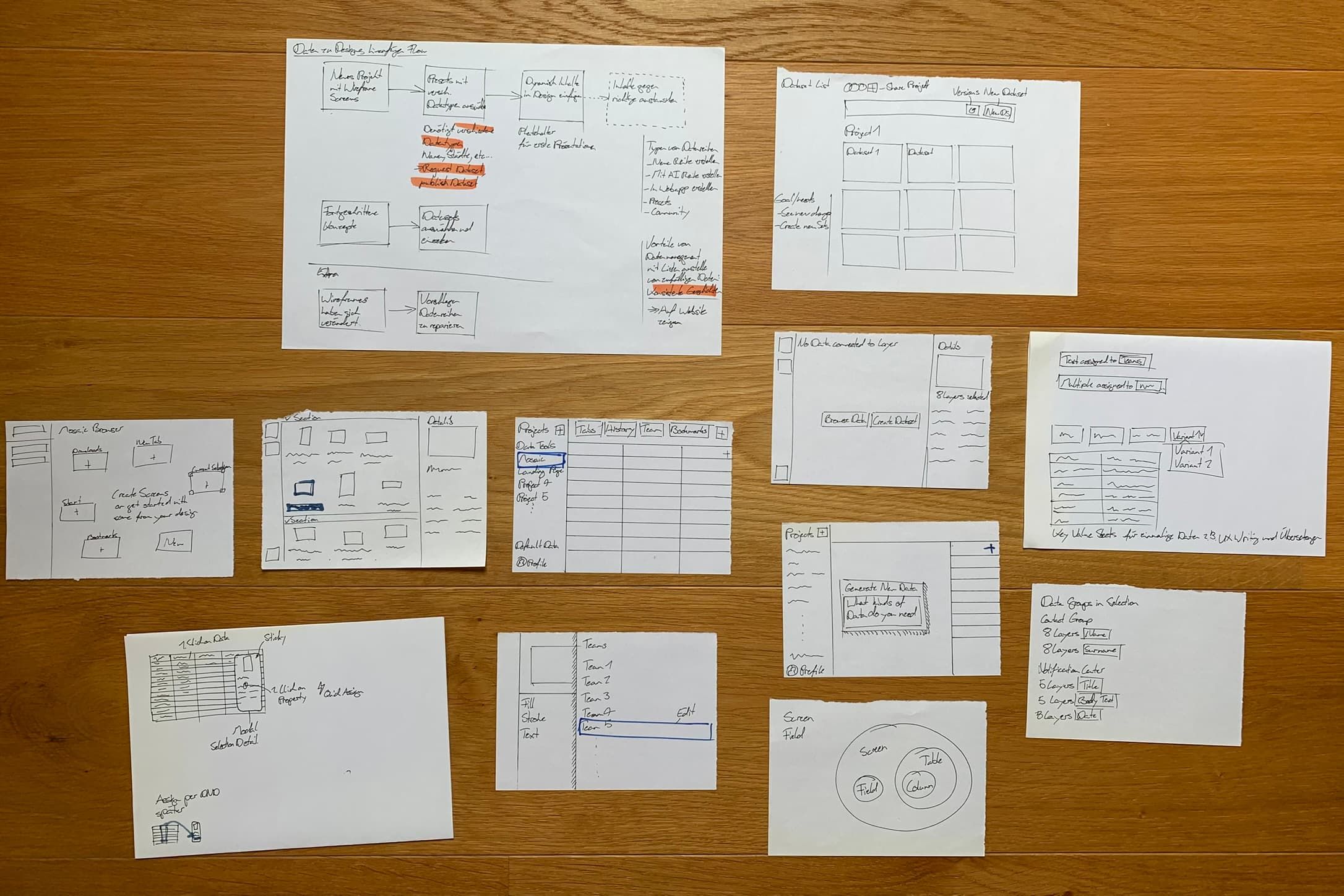ContentKit – Automating Content in Designs
Date published: Tags: Product DesignDevelopmentFigma PluginLearn more about it on the ContentKit landing page and register an account in the web app. You can test the plugin without account in the playground file here: Figma Community.
Leaving Kaiser X Labs and the Allianz world at the end of 2024, I started working on a new product called ContentKit. I’ve long been using plugins all the way back to Data Populator in Sketch since 2018 or Google Sheets Sync in Figma. However, there were a few pain points that I wanted to solve. First, the long-standing issue of knowing which data source was currently up to date. Second, reliability of how data is inserted into designs. Third, finding or writing the data in the first place, and finally, collaboration with stakeholders who might have their own opinion on the content of prototypes.
I’ve spent many hours in my career designing prototypes, some for quick tests, but also many longer-lasting ones during and even beyond the duration of a project. Here, updating them while designs, components and the content itself changed over time was tedious and prone to errors.
First steps
Section titled First stepsI started by analyzing the current tool landscape and the design process to see what other tools do right, how they fit into the design process, and what they’ve been missing.

There are many tools that provide all kinds of data types to choose from: names, cities, dates, album titles, or even ISBN numbers. Some provide user-generated data, and of course the new Figma AI content tools. While they’re very fast, they lack the ability to reliably insert the same data repeatedly, leading to inconsistent designs in prototypes, where screens are often similar or even repeat.
Aside from realistic data, a big part of prototypes are component properties. From simple button states to variants of cards and list element notifications, they are an essential part of modern UI design. Here, however, I saw significant room for improvement. Most content plugins focus on text, and few support properties. Even fewer handle the many edge cases when trying to update both.1
Additionally, many screens have deeply nested layers, and I wanted to make sure the plugin would be able to deal with any kind of structure without sudden index resets.
The Ecosystem
Section titled The EcosystemTo handle permissions, billing, and to let users edit and share data outside Figma, I created a web app as a companion with almost complete feature parity. Here, users can also create and manage teams, and I plan to use it as a platform for future design tools and projects.

Implementation
Section titled ImplementationThe plugin and web app are built in Svelte, allowing me to draw from my experience working on Collections, which is also Svelte-based. This allowed me to share some components like the table or dropdown positioning logic between the two parts.
The SvelteKit backend is connected to a database where all user data is stored. Here, I also use the same tech stack as Collections and continued to use Pocketbase, which is, from my experience, the perfect fit to easily prototype web applications. It is extremely easy to set up and use, but at the same time, powerful. Besides acting as a database, it supports authentication, user management and basic transactional emails. The whole setup and development would probably warrant its own blog post series.
Footnotes
Section titled Footnotes-
Imagine two data assignments, one at the variant level to switch from variant A to B and a text layer inside the component. What if the text layer only exists in variant B, but not in A? In that case the update might fail if the plugin attempts to update the text layer in the current variant A, even though it doesn’t exist. So we need to update the variant first. ↩